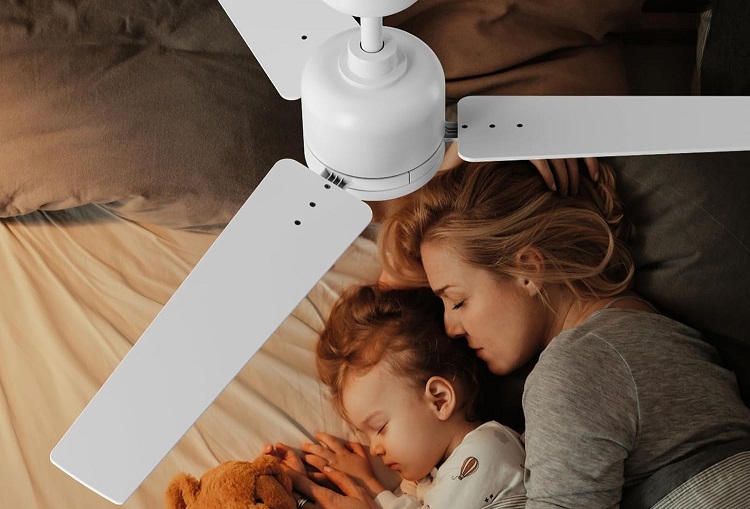A ceiling fan in the bedroom isn’t just about keeping cool. It’s also about comfort, quiet, and getting a proper night’s sleep without a distracting hum or rattle. No one wants to be lying awake at 2am listening to the sound of blades cutting through the air like a helicopter about to take off. That’s why getting one that runs quietly, without fuss, actually matters more than people think. We’ve reviewed some of the quietest ceiling fans for bedrooms, focusing on noise level, reliability, and build quality.
1

Exceptional
Newday Whisper Quiet Ceiling Fan for Bedroom
What We Like
2

Exceptional
VONLUCE 52-Inch Modern Ceiling Fan
What We Like
3

Exceptional
MSHENUED 60-Inch Wooden Ceiling Fan
What We Like
4

Exceptional
GLITI Dimmable Ceiling Fan
What We Like
5

Excellent
Ovlaim 132cm Silent Ceiling Fan
What We Like
What Makes a Ceiling Fan Quiet?
A quiet fan usually has a few things working in its favour. First, the motor. Some motors are designed to run more smoothly and don’t produce that constant humming sound you might get with cheaper fans. Brushless motors, for example, tend to be much quieter.
Then there’s the design of the blades. The shape and material of the blades can affect how much air is moved and how much noise is created as they spin. Balanced blades also help avoid the annoying wobble that can cause extra noise.
Another point is the mounting. If a fan isn’t installed properly or it’s mounted to a surface that vibrates easily, you’ll hear it. A solid installation can make a bigger difference than you’d expect.
Should You Choose a Fan with a Light?
If your bedroom doesn’t already have good lighting, a ceiling fan with an integrated light might be a good idea. It saves space and cuts out the need for a separate fixture. Just keep in mind that some light kits can buzz or hum after a while, especially if they’re not dimmable or fitted with the wrong type of bulb.
If you do go for one with a light, check if it takes LED bulbs or has dimming features. Both help keep the noise down and give you more control over the feel of the room.
How Big Should Your Ceiling Fan Be?
It depends on the size of the room. For small bedrooms, a fan with a blade span of around 36 to 44 inches usually does the trick. Larger bedrooms might need something closer to 52 inches to move enough air without needing to be run at full speed.
Keep in mind that running a fan on a lower speed often keeps the noise down. If you get the right size, it should be able to cool the room gently without working too hard.
Energy Use and Efficiency
Ceiling fans use far less electricity than air conditioners, but some are still more efficient than others. Look for energy-efficient models, ideally ones that have been rated for low power use. That way, you can keep it running through the night without worrying about your bill creeping up.
Also, fans with reversible motors can be used in winter too. They help push warm air down, which can be useful if your room gets a bit chilly.
Why is my ceiling fan making noise even though it’s labelled as quiet?
It could be a few things. Sometimes it’s just a matter of a loose screw or a bit of wobble that develops over time. If it wasn’t installed correctly, that can cause rattling or humming too. Also, if the fan is running at its highest speed constantly, it might start to strain a bit. Dropping it to a medium setting can often make a big difference.


